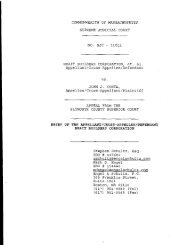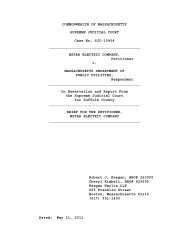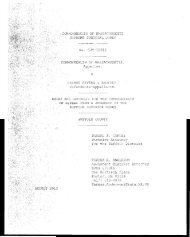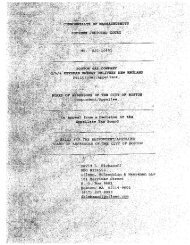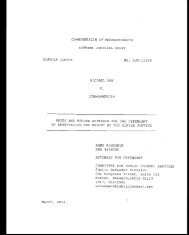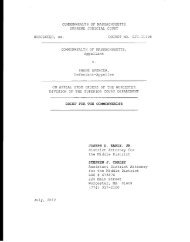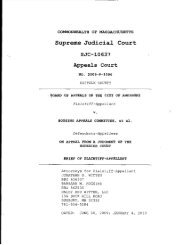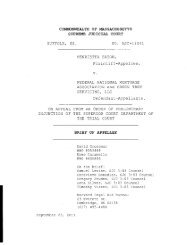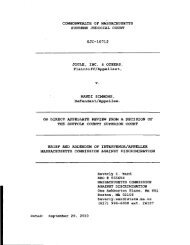463 Mass. 353 - Appellee Commonwealth Brief - Mass Cases
463 Mass. 353 - Appellee Commonwealth Brief - Mass Cases
463 Mass. 353 - Appellee Commonwealth Brief - Mass Cases
Create successful ePaper yourself
Turn your PDF publications into a flip-book with our unique Google optimized e-Paper software.
factors call for the reviewing Court, in light of the<br />
entire record, to consider many potentially pertinent<br />
factors, including "the premise of the defense" -and<br />
"whether the erroneously admitted evidence was merely<br />
cumulative of properly admitted evidence." Id.<br />
3. A Reviewing Court Can Always Consider<br />
Whether The Strength Of The<br />
<strong>Commonwealth</strong>'s Case "Radiates From A<br />
Core Of Tainted Evidence."<br />
Ronald Mendes argues, as the majority of the panel<br />
of the Appeals Court in this case held below, that<br />
because the certificates of analysis were relevant to<br />
an element of the offense, only evidence that was<br />
admitted in the <strong>Commonwealth</strong>'s case in chief should be<br />
considered in the harmless error analysis. (RonM.Br.<br />
36-41.) This approach is erroneous. This Court has<br />
never adopted any such approach, which improperly<br />
conflates harmless error analysis with the standard for<br />
ruling on a motion for required finding of not guilty.<br />
We know that this approach is erroneous, because<br />
under the Chapman standard, as this Court has just<br />
recently reiterated, the "essential question" has<br />
always been "whether the error had, or might have had,<br />
an effect on the tact finder and whether the error<br />
contributed to or might have contributed to the<br />
28



